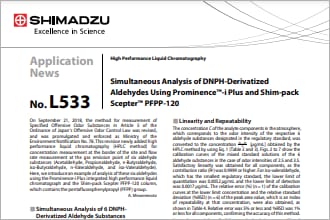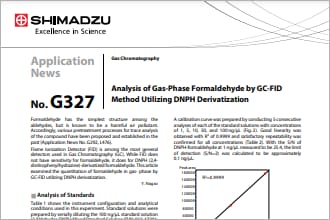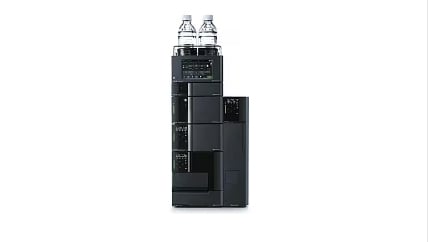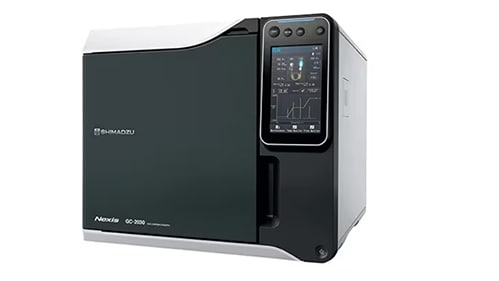Building upon 40 years of experience in LC technology, the Nexera series is a family of UHPLC systems that marries these AI and IoT enhancements to set new industry standards in terms of intelligence, efficiency, and design.
Aldehydes in Atmospheric Air

Aldehydes are among thirteen types of regulated hazardous air pollutants (substances that may have an adverse effect on human health if inhaled continuously and are also a cause of environmental pollution). The Japanese Offensive Odor Control Act mandates the measurement of aldehydes within the boundaries of factories. Here we introduce applications for gas chromatography (GC) and high performance liquid chromatography (HPLC) analysis of propionaldehyde, butyraldehyde, and valeraldehyde in air.
Application News
HPLC
Simultaneous Analysis of DNPH-Derivatized Aldehydes Using Prominence™-i Plus and Shim-pack Scepter™ PFPP-120
On September 21, 2018, the method for measurement of Specified Offensive Odor Substances in Article 5 of the Ordinance of Japan’s Offensive Odor Control Law was revised, and was promulgated and enforced as Ministry of the Environment Notification No. 78. This revision newly added high performance liquid chromatography (HPLC method) for concentration measurement at the border of the site and flow rate measurement at the gas emission point of six aldehyde substances (Acetaldehyde, Propionaldehyde, n-Butyraldehyde, iso-Butyraldehyde, n-Valeraldehyde, and iso-Valeraldehyde). Here, we introduce an example of analysis of these six aldehydes using the Prominence-i Plus integrated high performance liquid chromatograph and the Shim-pack Scepter PFPP-120 column, which contains the pentafluorophenylpropyl (PFPP) group.
GC
Analysis of Gas-Phase Formaldehyde by GC-FID Method Utilizing DNPH Derivatization
Formaldehyde has the simplest structure among the aldehydes, but is known to be a harmful air pollutant. Accordingly, various pretreatment processes for trace analysis of the compound have been proposed and established in the past (Application News No. G292, L476). Flame Ionization Detector (FID) is among the most general detectors used in Gas Chromatography (GC). While FID does not have sensitivity for formaldehyde, it does for DNPH (2,4- dinitrophenylhydrazine)-derivatized formaldehyde. This article examined the quantitation of formaldehyde in gas- phase by
Related Products
-
-
In today's environment, results are needed regardless of whether the analyst is working in the laboratory, the office, or from home. With the flexibility to accommodate a variety of applications, the Nexis™ GC-2030 supports the analyst’s procedures beyond the laboratory, at virtually any location.






